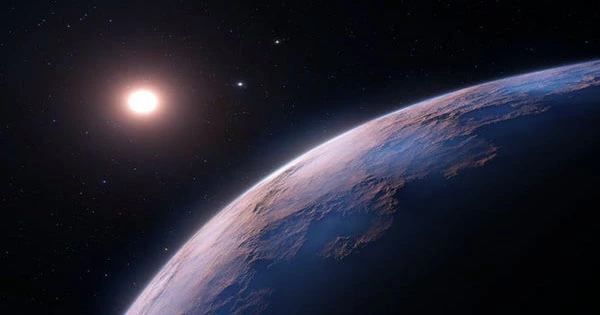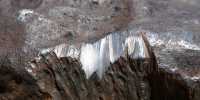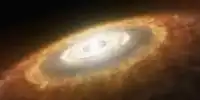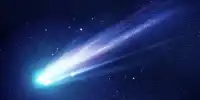WASP-121b is a hot Jupiter, a gas giant that orbits its star so close that it isn’t spherical and has a temperature in the thousands of degrees. It’s so hot that its clouds are comprised of molten metal, and astronomers have now figured out what’s going on at night, including a downpour of liquid gems, for the first time. An international collaboration has traced the emission of water, as well as other elements, over the day and night sides, as reported in Nature Astronomy. The planet is tidally locked, meaning one side is always facing its star and the other is always in the dark.
Water molecules disintegrate on the dayside. It’s roughly 3000 degrees Celsius (5,400 degrees Fahrenheit) there, which is hotter than certain stars. It’s hot enough to separate the hydrogen and oxygen, but only for a short time. Winds of 5 kilometers per second (11,000 miles per hour) transport those components to the night side, where the temperature is half as high and hydrogen and oxygen recombine to produce water vapor. They tracked a unique light feature of energized water molecules with the Hubble Telescope. The work has provided a genuinely global glimpse of WASP-121b’s atmosphere by following the water cycle on this faraway planet.
“We observed this water feature and charted how it altered as the planet moved through its orbit. This encodes data on how the planet’s atmosphere’s temperature changes as a function of height “In a statement, main author Thomas Mikal-Evans of the Max Planck Institute for Astronomy said. “We’re moving away from taking isolated photos of certain parts of exoplanet atmospheres and instead studying them as 3D systems.” The planet’s temperature never drops low enough for water clouds to form. Metals like iron, magnesium, and vanadium make up the planet’s clouds.
The Hubble data backs up the theory that the night side is chilly enough for metal clouds to form. They vanish after the strong winds sweep them back to the day side. Aluminum and titanium were not detected, which astonished the researchers. They offer an intriguing answer. When aluminum comes into contact with oxygen, it creates corundum. You may not be familiar with corundum, but you will be if it contains chromium, iron, titanium, or vanadium impurities. This is how sapphires and rubies are created.
On the JWST, the team has set aside time to continue their investigation of the planet. They aim to find carbon monoxide in the planet’s atmosphere, which they believe exists. Mikal-Evans remarked, “That would be the first time we could measure a carbon-bearing molecule in this planet’s atmosphere.” “The amount of carbon and oxygen in the atmosphere reveals where these types of planets emerge.”
















